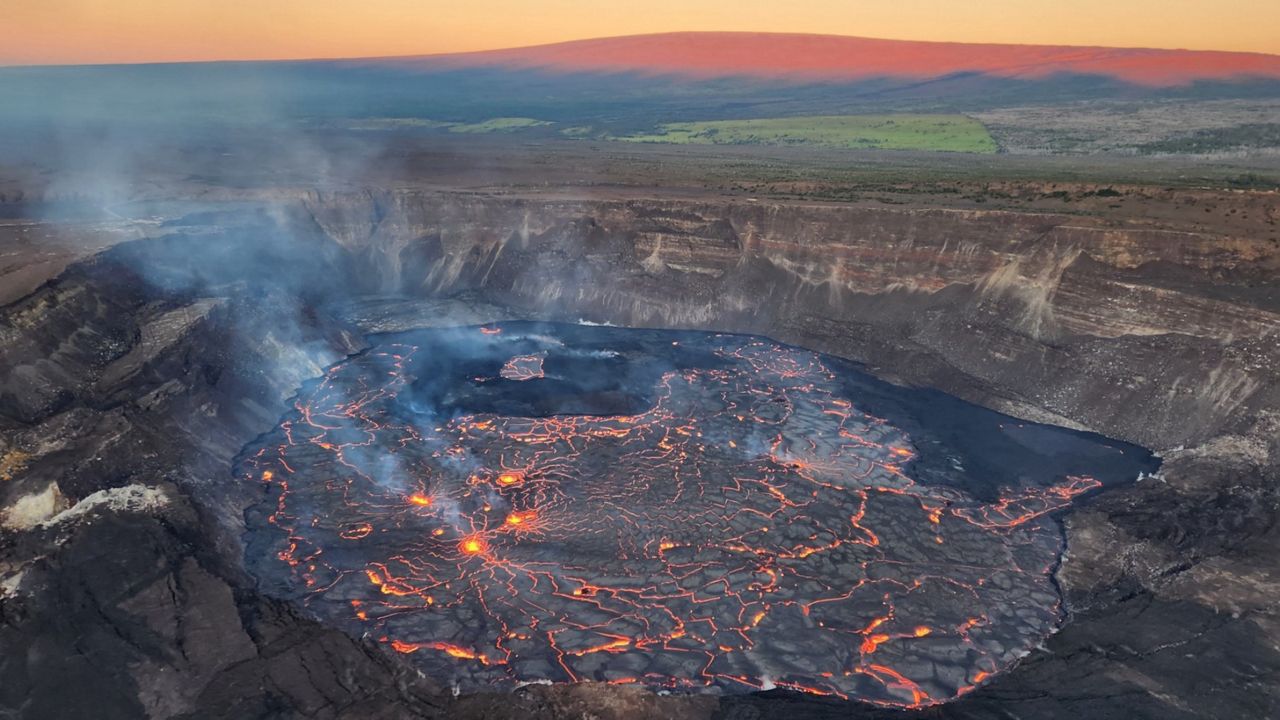HAWAII VOLCANOES NATIONAL PARK, Hawaii — Less than a month after its last flow ended, the glow of fresh lava was detected Thursday at Kilauea's Halemaumau Crater, marking the start of another eruption.
The U.S. Geological Survey said, "The eruption is confined to the crater and does not pose a hazard to communities."
The eruption started at 4:34 p.m. on Thursday after a period of heightened seismic activity beneath the summit and physical inflation of Kilauea that began Thursday morning.
Hawaiian Volcanoes Observatory issued a red warning as the eruption resumed. However, the volcano alert level was lowered Friday morning to an orange watch as the eruption shows no signs of migrating outside Halemaumau Crater. The initial high effusion rates are also declining and there is currently no threat of significant volcanic ash emission into the atmosphere that might affect aviation, according to USGS.
Kilauea eruptions may continue for a long time without any threat to people or property, according to the Hawaii Emergency Management Agency.
Editor's note: This story has been updated with the new alert level and information about how the eruption began.



